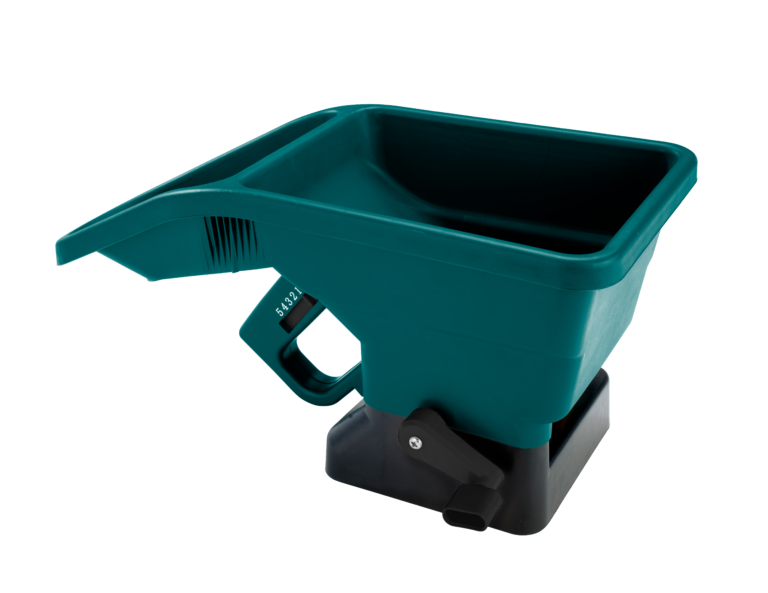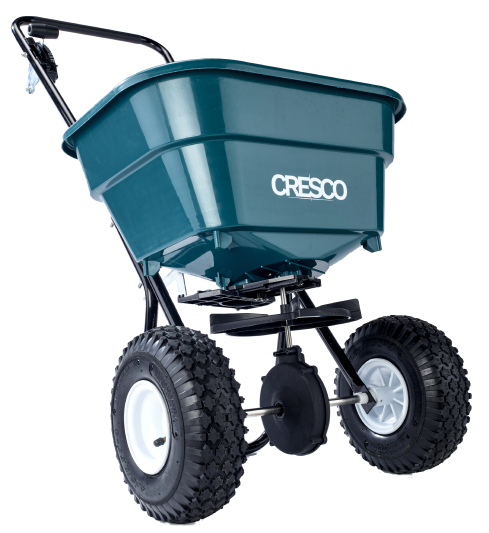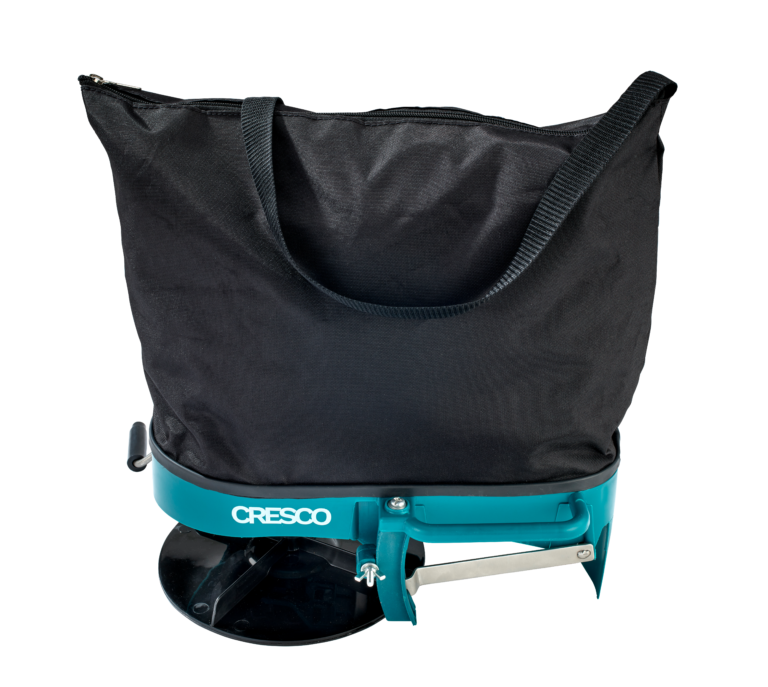Spring has sprung and you’re sitting down to watch the opening weekend of the MLB. With beer in hand, the first thing that hits you is how good the fields look. How do the groundskeepers create such incredible patterns on the field?
The good news is striping a lawn is in fact very easy! No aliens nor graduates from Hogwarts chanting, ‘Wingardium Leviosa’ are needed.
Follow along to find out everything you need to know when it comes to striping a lawn so you can achieve that MLB look!
To get the creative juices flowing, look at this striping seen in Major League Baseball Stadiums.
How to stripe a Lawn with a Push Mower
The effect you see on MLB fields is simply the grass reflecting light in a different way. When mowed, the grass is pushed in different directions, we call this bending the grass. You can achieve this by walking over the grass in any direction with some kind of weight (normally a mower).
Blades bent toward display a dark complexion and blades bent away from you create a light complexion. If you think about this in relation to the sun it makes sense. The blades bent away from you reflect the sun’s light whereas the blades bent toward you point towards terra firma, creating a darker shade of green.
What creates the bending of the blades? Grass blades are pretty lightweight, so it doesn’t take much to bend them. In fact, mesmerizing patterns can be made by the soft brushing of dew-swept grass. However, in the main, the act of striping a lawn is usually completed using a mower or a specific striping kit.

How to Stripe a Lawn without a striping kit or roller
It’s important to note it is not essential to have a striping kit or roller to create a fresh trim for your lawn. If you have cool season-type grass, with a height between 2.5 to 4 inches, you can create a great look with a standard push mower.
Check out this video by Ryan Knorr to see the effect he was able to get with a basic mower off Amazon.
But what’s a cool season-type grass? And, 2.5 – 4 inches, this sounds like it’s getting technical. I hear you say.
Don’t worry; we will cover grass types and heights later in the article. For now, know that if you live in a cool climate, you have the perfect grass for striping.
For those of you who live, in warm climates, you’ll need to read to the end, as you may find it a little more difficult to stripe your lawn.
To understand what grass grows where have a read at this article by SodSolutions.
How to stripe a lawn with a push mower
To stripe a lawn with a push mower, all you need is to understand the concept of how light reflects off the grass. Mowing in one direction away from you will create a light shade and mowing toward you will create a dark shade. All you need is this knowledge, a mower, and a lawn full of cool-season grass.
Cheap mowers purchased from any major outlet will have a flap on the back that has enough weight to bend the grass in the direction you’re walking.
In an ideal world, your lawn would be a perfect square or rectangle. This would make it easy to follow a striped pattern across the whole of your lawn. However, most lawns are uneven and can create awkward shapes to mow.
To combat this, start by mowing an outline in your lawn to create an easy-to-mow square or rectangle. Once you have cut out the awkward angle of your lawn, you can follow a straight up-and-down pattern to create stripes in your lawn.
To stripe your lawn, turn on your mower and adjust the height to the length you want to mow at. Push the mower in a straight line to make one run (either along the length or width) of your lawn. When you reach the end of the lawn, lift the deck of the mower, and position the wheels at the edge of your first run. Push the mower along the edge of the first run and it will bend the grass in the opposite direction.
The first run is by far the most important run as it will set how straight you are for the rest of your mowing session. To help, pick a point in the distance and focus on it. Try as hard as possible to walk in a straight line until you reach your grass edge.
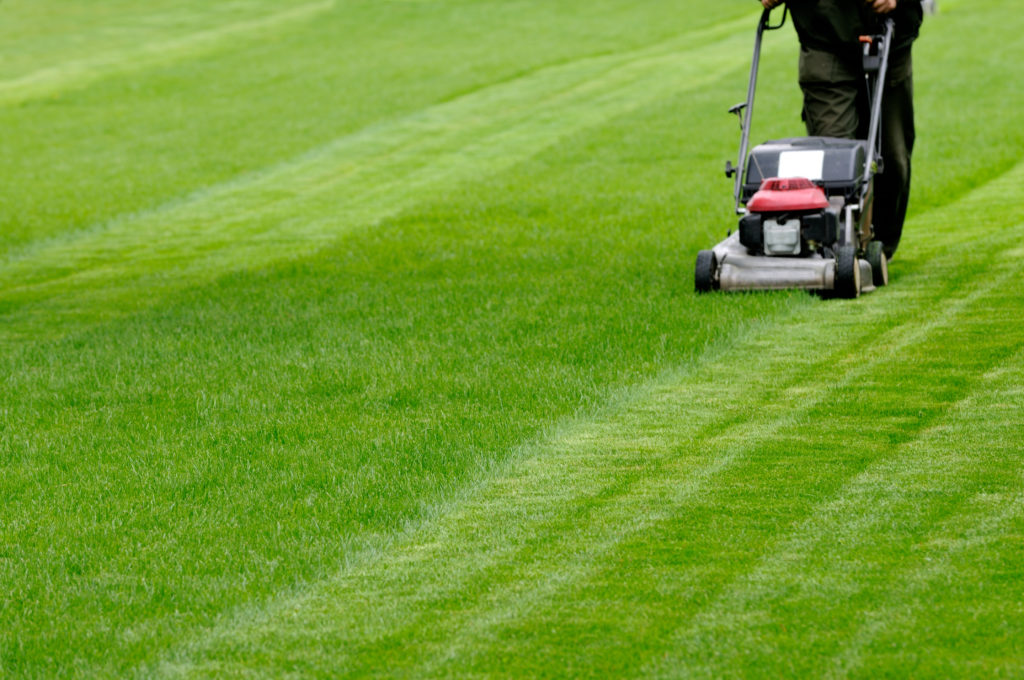
Over time, you will trial and error different patterns until you find the results you’re looking for. You will become more familiar with your yard the more you mow and eventually be able to experiment with more complex designs.
How to double stripe a lawn
One such design is double striping your lawn. This is a great ‘next step’ on your journey to becoming a striping master!
Double striping your lawn means running two mowing lines in the same direction, before a further two lines in the opposing direction. This will create a thicker stripe which is more aesthetically pleasing. Take a look at the differences between a single-stripe lawn and a double-stripe lawn below.

A single striping lawn technique is easier to follow because it is easy to mow a lawn by mowing up one way and down the other. Double striping involves keeping two lines in the same direction, before mowing two lines in the opposite direction.
You can create this aesthetic by mowing a channel around the edge of the lawn. You can then use this channel to make sure you’re starting on the correct side each time. This will allow you 2, 3 or even 4 runs in the same direction before creating the opposing stripe sequence in the opposite direction. Obviously, this depends on the size of the lawn you a cutting.
Tips and tricks to increase the contrast of your striping
It won’t take long before you’re mowing stripes into your lawn every week and experimenting with different patterns. Unfortunately, as the complexity of the patterns increases, so too does the commitment to your lawn care.
How to Stripe a warm season grass type
Mowing with a standard lawn mower is good enough to create stripes with a cool season-type grass. But it’s going to struggle to give you the look you’re aiming for if you live in a warm climate.
Warm-season grasses such as, Bermudagrass, St. Augustine, or Centipede, are coarser than their cool-season counterparts. As a result, they need more weight to bend them in a certain direction. They also tend to prefer shorter cutting heights which make them more difficult to bend.
To stripe a warm-season grass type, to stripe a short lawn, or to enhance the effect of your striping, you will want to buy a reel mower, a striping kit, and a roller. Here, the Lawn insider gives a great explanation about how he stripes his Bermuda Lawn.
Mowing with A Striping Kit
A striping kit is a roller accessory that fits onto the back of your mower. It will provide sufficient weight to bend the grass either towards or away from the sun. You can purchase a striping kit from Amazon which fits almost all types of mowers. This Toro Lawn Striping System is a great starting point!
Alternatively you can make your own homemade striping kit. All you need is a dense pipe that you attach to the back of your mower to drag it behind you when mowing to bend the grass. Check out this helpful video for a DIY lawn striping kit.
To mow with a striping kit, you will need to follow the same patterns spoken about earlier. Be careful when you get to the end of the run, as you will want to make sure the roller is pushing the grass in the right direction when you turn for the next run.
What mower is best for striping
Although a lawn striping kit will add value to your work it won’t give you that expert look. To gain a world-class sporting event lawn, you will want to investigate a reel mower
As you can see from the preceding link, reel mowers are expensive, ranging from $2,000 to $7,000 and above. But although expensive, they can enhance your lawn care routine in the following ways:
- Save time
- Create Sharper stripes
- Create a healthier lawn
A reel mower can save you a lot of time if you have already committed to cutting your grass regularly and taking small amounts off.
Reel mowers work by cutting horizontally with a very sharp blade fixed to a shaft that creates a spinning action. This motion encourages the grass to stand upright ready to be cut. The sharpness of the blade then acts like a scissor, delicately yet decisively cutting the blades without damaging the grass. The spinning blade mechanism coupled with a powered motor allows you to whiz through a mowing session in no time at all.
If you need to take a lot of height off, a reel mower is probably not the best option. Standard mowers cut the grass horizontally and cut the grass with a blunter blade using speed. Imagine the difference between someone cutting your hair with a machete and a professional with a pair of scissors. A blunt machete will use speed to cut through the hair whereas the scissors will cut through the tops of the hair with precision.
In summary, if you are committed to regular mowing for a great look, a reel mower will save you a lot of time. Alternatively, if you are happy with a mowing regime of once every two weeks, you can still stripe your lawn with a more conventional mower.
A reel mower will also help you create a much sharper contrast in your striping. By having a better cut, the edges will be crisper looking creating greater contrast. In addition, the weight of the reel mower (roughly 200lbs and above) will bend even warm-climate grass with ease.
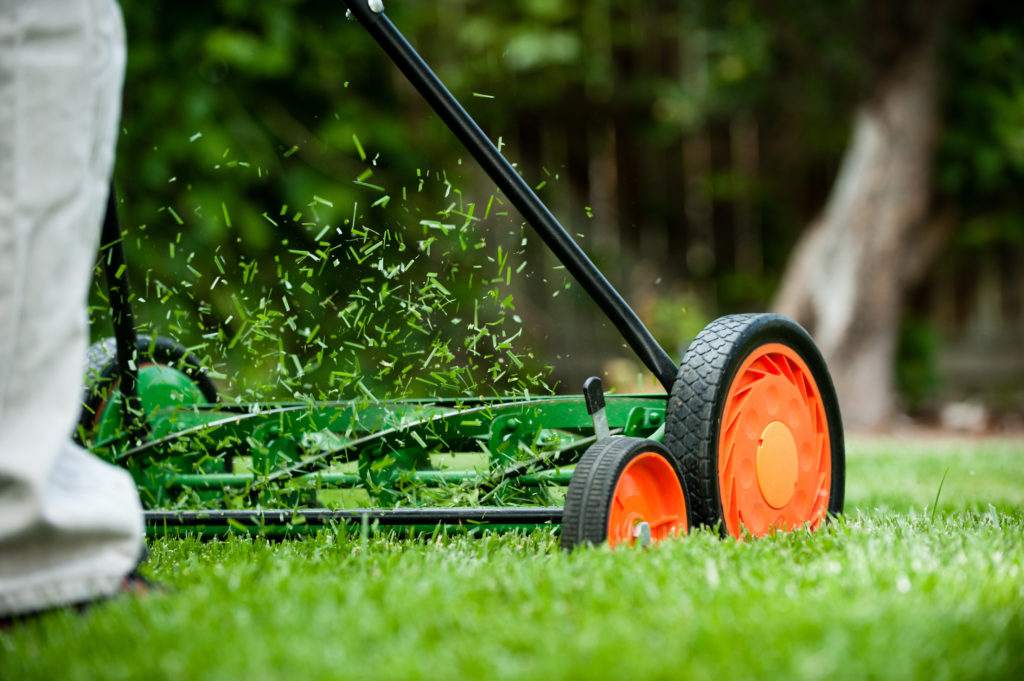
Other Tools for striping your lawn
As you’re probably beginning to realize striping a very short or coarse lawn involves weight. Too much weight can damage your lawn but in general, the more weight you have the easier it will be to cement those stripes in. This is where a roller comes in handy.
When purchasing a roller, you will have to think about what kind of stripes you are wanting on your lawn. A very heavy roller will give you a lot of weight but not much mobility, so it would not be a great choice if you’re looking for complex striping.
In general, a standard home garden roller purchased online will provide the weight and maneuverability needed to perfect your lawn.
How to Stripe a Lawn Like a Pro
Horizontal Striping
So, you understand the concept and have all the kit! The only thing to do now is to experiment with different patterns.
Horizontal striping is the second easiest pattern to perfect as it is just cutting your lawn twice in the standard striping pattern but at different angles.
By mowing your lawn vertically, you will create a basic striping pattern.
To create a horizontal striping, you will want to repeat the process but with an east-to-west direction at a 90-degree angle to your first mow. This will create a chequered pattern like the field of a chessboard.
Below, Big League Lawns explains mowing in a checkered pattern.
Diagonal Striping
Diagonal striping is arguably the best method for homeowner striping. It’s simple enough to allow you to mow in a reasonable time frame yet complex enough to wow the whole neighborhood!
Another aspect of diagonal striping is that it offers a wider viewing angle of your lawn. For example, if you have a vertical, north-to-south striping pattern, it can only be viewed from above or when someone is directly in front of the lawn.
Conversely, diagonal striping can be seen from a distance and the contrasting patterns of the lawn will catch everyone’s eye.
Here, jealous lawn care offers a great intro to diagonal striping,
Single-Double Striping
Single-Double Striping is also a great pattern for homeowners interested in lawn care. This pattern is often used in different parts of baseball fields to give a professional look.
The single double pattern is completed by creating one run north to south and then two runs south to north. In other words, you mow up and down in two opposing runs, before going back up the first run and down the third run to create one light shades and two dark shades.
Double Cutting
If you’ve lasted this long, then you are already an expert on lawn striping, but there is one last tip to offer, double cutting.
If you go over your mow lines in the same format twice, you will see significantly better results than if you do it just the once!
Conclusion
Effecting your lawn in a positive way requires a wide range of knowledge on lawn care. Striping alone is not going to give you a great look if you have lots of unwanted weeds scattered all over your yard!
However, striping does offer a simple and inexpensive way to enhance the look of your lawn. Here are the takehomes of How to Stripe a lawn:
- Understand the concept that striping is to do with bending grass. The blades will reflect the suns light in different ways creating a darker shade and a lighter shade.
- Cooler weather grass is easier to stripe than warm weather grass.
- Similarly, tall grass is easier to stripe than short grass.
- You will create stripes through mowing but a striping kit or roller will help.
- By investing in a better mower, such as a reel mower, you will improve the look of your striping.
- Double-cutting your lawn or going over your pattern with a roller will further cement the look.
- There are hundreds of different patterns out there so get experimenting!
